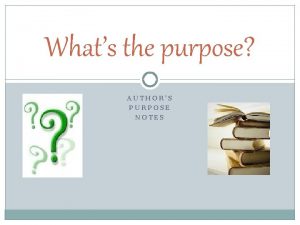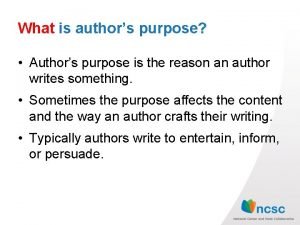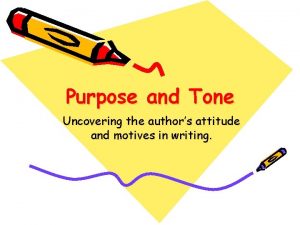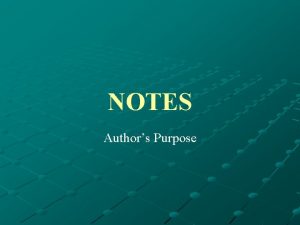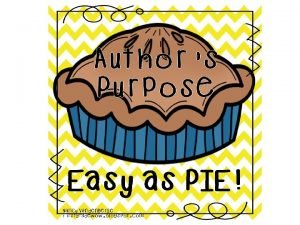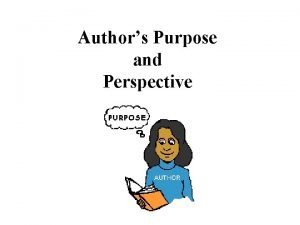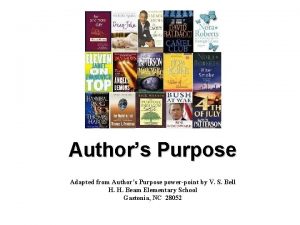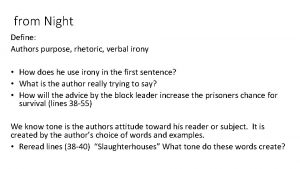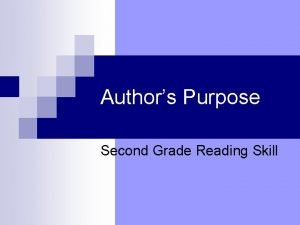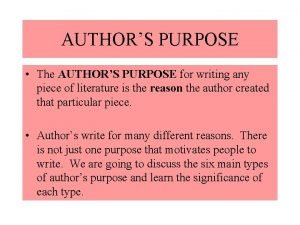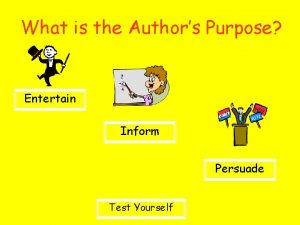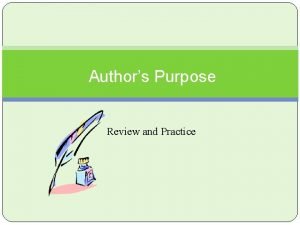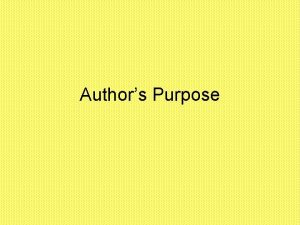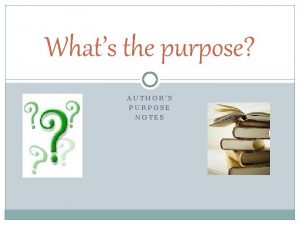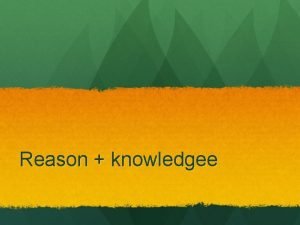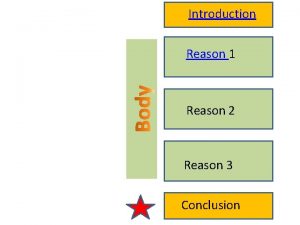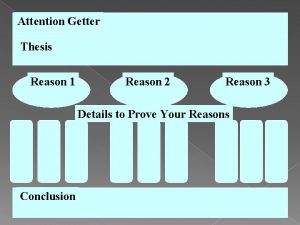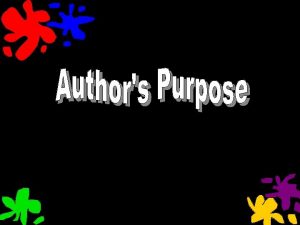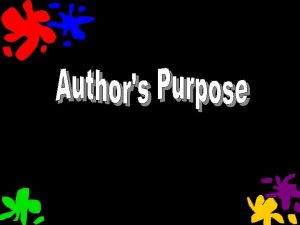Elements of Literature Authors Purpose An authors reason













- Slides: 13

Elements of Literature

Author’s Purpose An author’s reason for creating a particular work is called the author’s purpose. Sometimes the author will state his or her purpose up front. Other times you’ll need to make inferences (reasonable guesses) about the author’s purpose. There are three basic reasons an author might choose to write: • to explain or inform • to entertain • to persuade

Setting When you talk about the where and when of a story, what you’re really talking about is the story’s setting. Understanding a story’s setting can give you a context for the events of the plot. A well developed setting can create a mood or tone.

CHARACTER: A character is a person or an animal that takes part in the action of a story.

3 WAYS AUTHORS DEVELOP CHARACTERS: • Physical appearance – what they look like, including age, dress, hair cut, etc. • Actions – what they do, what they say, how they interact with others, etc. • Thoughts and feelings

CHARACTER TYPES: Protagonist – the hero/heroine of the story (“the good guy”) The action of the plot revolves around him or her. Antagonist – the person or thing opposing the main character (“the bad guy”)

Conflict • This is a struggle between two opposing forces usually a protagonist and an antagonist. Internal vs. External • Internal conflict occurs when a character experiences two opposing emotions or a tough decision. – Ex: Elsa’s struggle with returning to Arendelle or stay in isolation. – (Write one of your own and share with your table. ) • External conflict occurs when an external force impedes the progress of a character. – Ex: Harry Potter v. Lord Voldemort – - (Write one of your own and share with your table. )

Point of View • First-person Point of View: in the firstperson point of view, the story is told by one of the characters. The character uses pronouns such as I, me, or we and usually participates in much of the action. • Third-person Point of View: in the thirdperson point of view, the story is told by a narrator who is not a character in the story. (Pronouns such as she, and they are used when writing in third-person point of view)

Theme • Themes are important topics the author examines. • You will need to infer what themes are. They are important to the development of the story and can often be main characters’ strengths or weaknesses. • Common themes – friendship, hard work, caring, generosity, the Golden Rule, … Author’s Message • Author’s message (the “moral”), is what the author wants you to learn. • Author’s message can often be found by analyzing how the main character changes throughout the story. • Consider what moral the story taught or reinforced.

Author’s message v. Author’s purpose • Friends support each other in tough times. • A piece written to persuade • A piece written to inform • It is better to give than to receive. • Resourcefulness can get you out of a sticky situation. • A piece written to entertain • AM • AP

Symbolism • A symbol is something concrete—such as a person, place, or object—that signifies something more than just itself, such as a concept, feeling, or idea. Some symbols you will probably be familiar with already: Why is symbolism powerful?

Mood/Tone • The mood or feeling the author intends for the audience to feel. Writers can choose words, phrases, and images to create a whole range of moods —from anger and sadness to excitement and fear.

Review • On your paper write the 3 most common purposes for writing. Compare with your partner. • A’s share with B’s What the environment in which a story takes place is. • What are 3 ways authors develop their characters? Compare with your partner. • B’s to A’s – What is the good guy called? • A’s to B’s – What is the bad guy called? • The problem in the story is called _____. • Discuss with your partner how author’s purpose is different than author’s message. • In you own words write a definition for mood. Share with your partner. • Discuss with your partner the power of symbolism.
 Whats authors purpose
Whats authors purpose What is the author's purpose? *
What is the author's purpose? * Tone of the author
Tone of the author Definition of authors purpose
Definition of authors purpose Authors purpose pie
Authors purpose pie Point of view flocabulary
Point of view flocabulary Powerpoint on author's purpose
Powerpoint on author's purpose Verbal irony in night
Verbal irony in night Authors purpose second grade
Authors purpose second grade Types of author's purpose
Types of author's purpose Entertain author's purpose
Entertain author's purpose To entertain
To entertain Example of persuade inform and entertain
Example of persuade inform and entertain The author probably wrote this passage to
The author probably wrote this passage to
